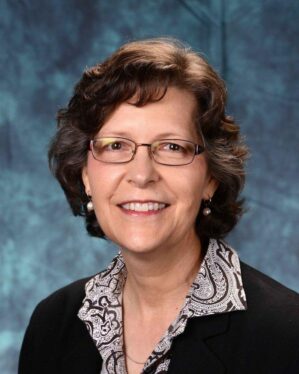
An introduction to some of Arkansas’s early public health officials at the Arkansas Department of Health while she was a medical student sparked Dr. Jennifer Dillaha’s interest in public health. She credits subsequent training in internal medicine, infectious diseases, and research at UAMS for preparing her to lead that same organization as Director of the Arkansas Department of Health. Below, Dr. Dillaha discusses her career and how being a UAMS alumna has impacted her life’s work.
Dr. Dillaha, did you complete internal medicine residency in 1996? And an infectious diseases fellowship in 1999?
Correct. I did the Investigator Pathway in ID, which is a combined residency/fellowship program meant to support trainees interested in research. This meant I did a shortened residency and a longer fellowship, which included time in a research laboratory. My research was in tuberculosis epidemiology. I also completed a fellowship in Geriatric Medicine in 2001.
Can you describe your work and priorities as Director of the Arkansas Department of Health (ADH)? We’d love to know about any successful initiatives/projects you have led. Please describe your career path from residency to director of ADH.
I joined the Arkansas Department of Health after I completed my training in 2001. Initially I worked to address the needs of our aging population. In 2005 I became the Director of the ADH Center for Health Advancement, which oversees the WIC, oral health, and chronic disease prevention programs. It also includes the Tobacco Prevention and Cessation Program, and it was my pleasure to lead the implementation of the Clean Indoor Air Act when it was passed in 2006.
Around that time, I became familiar with the concept of health literacy and realized that low health literacy plays a major role in the poor health status and the health disparities we experience in Arkansas. I worked hard to raise awareness of the problem by giving multiple presentations and nurturing several collaborative efforts in Arkansas. Our initiatives gained national attention and eventually I was asked to serve on the National Academies of Science, Engineering, and Medicine’s Roundtable on Health Literacy. Many people became interested in addressing the problem of low health literacy, including the UAMS Center for Rural Health, which supported the development of the UAMS Center for Health Literacy.
In 2010, I moved to the ADH Office of the Director, where I continued to work on health literacy but also other strategic initiatives, including performance management and public health accreditation. In 2013, I moved to the ADH Center for Health Protection, where I became the Medical Director for the Immunization Program. I worked hard to assure the sustainability of the state immunization coalition, the Arkansas Immunization Action Coalition, better known as Immunize AR. In 2019, I also became the Medical Director for Outbreak Response and was in a good position to play a significant role in the ADH response when the COVID-19 pandemic arrived in Arkansas in March 2020. At the time, I also took on the role of the State Epidemiologist as ADH moved into high gear for the COVID-19 pandemic. In August 2021, I stepped into the role of Chief Medical Officer vacated by Dr. Jose Romero when he became the Director and Secretary of Health on Dr. Nate Smith’s Departure to the CDC. When Dr. Romero also left for the CDC, the former governor appointed me as the Director in May 2022.
How has your training in the UAMS Department of Internal Medicine benefitted you or prepared you throughout your career and in your current role?
My training at UAMS provided me with an excellent background in both infectious diseases and chronic diseases, which has enabled me to serve in a range of roles that have prepared me well for my role as the ADH Director. In addition, my training at UAMS helped me learn how to think about health problems in a way that made me better able to address them. For example, in learning to think through a differential diagnosis, I learned the value of double-checking myself and the importance of asking myself, “Could I be wrong? And if I were wrong, how would I know it?” Another example is I learned the difference between treating the patient versus treating the disease. My patient is now the population rather than individual patients; however, the lesson still applies. I realize that if I am not able to help Arkansas improve the context in which people live (clean water, better housing, access to nutritious food, places to walk), we will have little success in helping them maintain or improve their health.
Are there any fond memories or stories from your time as a resident and fellow that you would like to share? Are there faculty and staff in the department who were impactful in your training that you would like to recognize?
I am grateful to Dr. Bob Bradsher, who introduced me to Dr. Bill Stead when I was a medical student. Dr. Stead was the ADH Tuberculosis Control Officer and attended Internal Medicine Grand Rounds every Thursday. Dr. Stead introduced me to Dr. Joe Bates and both Drs. Stead and Bates took me under their wing to nurture my interest in public health. At that time there was no public health training available in Arkansas, so I was fortunate enough to do an elective at the CDC in their Tuberculosis Elimination Division.
I am also grateful to my fellow residents and Dr. Bob Bradsher, who helped me navigate the difficulties related to my pregnancy and complete my training despite a six-month absence.
Dr. Dillaha, thank you so much for sharing your story with us.
Thank you. I feel quite honored.
